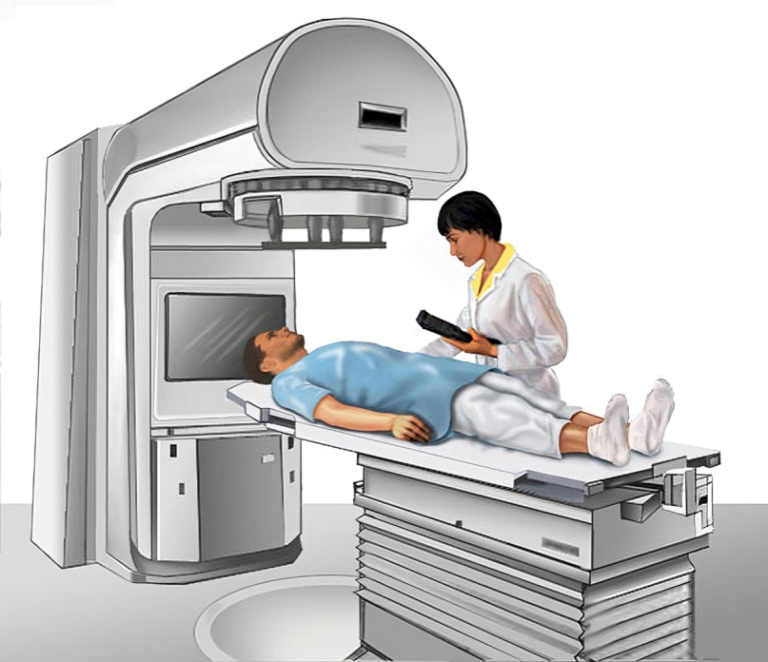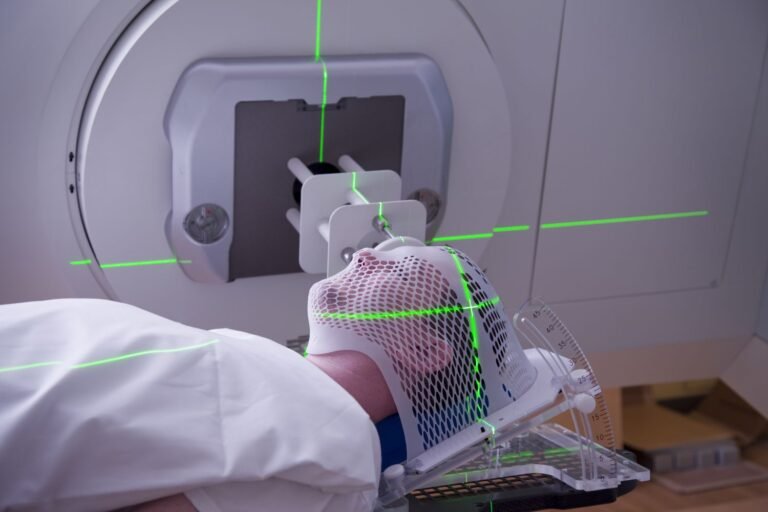Understanding Radiation Therapy: Uses, Process and Side Effects.
Radiation therapy, also known as radiotherapy, is a common treatment for cancer and other medical conditions. This article provides an overview of radiation therapy, including its uses, how it works, the treatment process, potential side effects, and its role in cancer care.
To Know More About it Please Click Here
What is Radiation Therapy
Radiation therapy is a medical procedure that uses high-energy radiation to target and destroy cancer cells or to shrink tumors. It can be administered externally (external beam radiation) or internally (brachytherapy), depending on the type and location of cancer being treated.
Uses of Radiation Therapy
Radiation therapy is primarily used for the following purposes:
- Cancer Treatment: Radiation therapy is a primary treatment modality for many types of cancer, either alone or in combination with surgery, chemotherapy, or immunotherapy. It is used to destroy cancer cells, shrink tumors before surgery, or relieve symptoms in advanced cancer stages.
- Palliative Care: Radiation therapy can alleviate symptoms and improve quality of life for patients with advanced cancer by reducing pain, bleeding, or pressure caused by tumors.
- Adjuvant Therapy: Radiation may be used after surgery to eliminate remaining cancer cells and reduce the risk of cancer recurrence.
How Does Radiation Therapy Work
Radiation therapy works by damaging the DNA inside cancer cells, preventing them from dividing and growing. It can be delivered using different techniques:
- External Beam Radiation: This involves aiming high-energy X-rays or particles (such as protons) from outside the body at the tumor. The radiation is precisely targeted to minimize damage to surrounding healthy tissues.
- Brachytherapy: In this technique, radioactive sources are placed inside or near the tumor. This allows for a higher dose of radiation to be delivered directly to the cancer site while sparing nearby healthy tissues.
The Radiation Therapy Process
The process of radiation therapy typically involves the following steps:
- Consultation and Simulation: Before treatment begins, patients undergo a consultation with a radiation oncologist. This includes a physical examination, review of medical history, and simulation to determine the exact position for radiation delivery.
- Treatment Planning: Based on simulation results and imaging studies (such as CT scans or MRIs), a treatment plan is developed to deliver precise doses of radiation to the tumor while minimizing exposure to healthy tissues.
- Radiation Sessions: Treatment sessions are scheduled based on the prescribed course of therapy, which may range from several days to several weeks. Each session lasts a few minutes and is painless.
- Monitoring and Follow-Up: Throughout treatment, patients are monitored closely by their radiation oncology team. Follow-up appointments are scheduled to assess treatment response and manage any side effects.
Potential Side Effects of Radiation Therapy
While radiation therapy is generally well-tolerated, it can cause side effects that vary depending on the area being treated and the dose administered. Common side effects include:
- Fatigue
- Skin changes (redness, irritation, or dryness)
- Hair loss (in the treatment area)
- Nausea and vomiting (if the abdominal area is treated)
- Changes in bowel habits or bladder function
To Know More About it Please Click Here
Conclusion
Radiation therapy is a highly effective and integral part of cancer treatment and care. It plays a crucial role in targeting cancer cells while minimizing damage to healthy tissues. If you or a loved one is considering radiation therapy, consult with a radiation oncologist to discuss treatment options, potential benefits, and expected outcomes. Advances in radiation technology continue to improve precision and reduce side effects, making radiation therapy an increasingly effective and well-tolerated treatment option for cancer patients.








